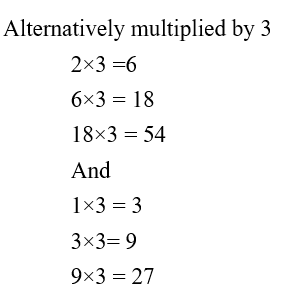Question 1: 
Question 2: 
Question 3: 
Question 4:
निर्देश : निम्नलिखित प्रश्नों में प्रश्न चिह्न (?) के स्थान पर क्या होना चाहिए?
Direction : What should come in place of the question mark (?) in the following questions?
156% of 616 – ? % of 4 = 901.96
Question 5: 
Question 6:
निर्देश : निम्नलिखित श्रृंखला में प्रश्न चिह्न (?) के स्थान पर क्या मान होना चाहिए?
Direction : What should be the value in place of the question mark (?) In the following series?
7, 16, 26, 37, ?, 62
Question 7:
निर्देश : निम्नलिखित श्रृंखला में प्रश्न चिह्न (?) के स्थान पर क्या मान होना चाहिए?
Direction : What should be the value in place of the question mark (?) In the following series?
6, 9, 18, 45, ? , 472.5
Question 8:
निर्देश : निम्नलिखित श्रृंखला में प्रश्न चिह्न (?) के स्थान पर क्या मान होना चाहिए?
Direction : What should be the value in place of the question mark (?) In the following series?
5, 20, 53, 112, 205, ?
Question 9:
निर्देश : निम्नलिखित श्रृंखला में प्रश्न चिह्न (?) के स्थान पर क्या मान होना चाहिए?
Direction : What should be the value in place of the question mark (?) In the following series?
2, 1, 6, 3, 18, 9, 54, ?
Question 10:
निर्देश : निम्नलिखित श्रृंखला में प्रश्न चिह्न (?) के स्थान पर क्या मान होना चाहिए?
Direction : What should be the value in place of the question mark (?) In the following series?
3, 9, 15, 25, 35, 48, ?



